When it comes to dinners, I like to use a combination of homemade from scratch, store-bought and modified, and prepackaged camp meals. Since I’m really busy, I don’t make too many meals meals from scratch. The prepackaged camp meals tend to cost a pretty penny, have way too much sodium and many times just don’t taste that great. Basically, I’m too picky to eat freeze-dried meals all the time, but too busy to make my own food. That means most of my dinners are assembled from a mix of home dehydrated foods and store-bought products.
General Directions
1) Each of the meals listed below is either pre-dried or will need to be dehydrated at home. Once you’ve got your dried meal, you may choose to mix in any combination of dehydrated or freeze-dried vegetables, fruits, meats, and grains.
2) Divide up your final concoction as individual servings in ziplock freezer bags; the exact portions of your servings will depend on your personal taste and needs. Label each baggie with your packaging date and, if you like, how much boiling water to add.
3) Later, on the trail, pull out the ziplock baggie of your dried meal and add just enough water, boiling or cold (if you’re going stove-less), to cover all the food. If you’d like the meal more watery because it’s a soup, then just add more water! Reseal the ziplock, carefully mix the food and water by smooshing the baggie with your hands (I use gloves because it’s HOT!), and place it in a cook-in-cozy for 10-15 minutes. The meal will come out fully rehydrated, hot, and delicious.
4) I’ve listed the cost for the “body” of each meal and the amount of servings I tend to get out of each product as a 130 lb. female. This is to give you a rough idea of how much each trail meal will cost. I’ve also listed whether or not the meal tastes better hot or cold, depending on whether or not you’re hiking stove-less.
Purchasing Mix-Ins
If you don’t have the time or motivation to dehydrate your own fruits, veggies, and meats, you can purchase them online. I dehydrate most of my own veggies because it’s so easy and affordable. There are a few items I prefer to purchase because they’re dried better than I could have done and it saves me time. Mix-in items I typically purchase include:
- Freeze dried meats (beef, chicken, pork)- Try Mountain House or Honeyville.
- For a vegetarian option, try Honeyville’s textured vegetable protein (TVP). It comes in all sorts of flavors!
- Green beans- Mountain House
makes some good ones.
- Diced potatoes- Try Harmony House or Honeyville
Pasta Salad
Cost: One box of pasta costs about $1.00 and will give me five servings. This works out to $0.20 per serving.
Mix-Ins: sun dried or dehydrated tomatoes, quartered artichoke hearts, chicken (also try peas, carrots, and corn). After rehydrating it on the trail, drizzle with salt, pepper, and olive oil or a single serving packet of salad dressing.
Works great hot or stove-less!
Lentil Soup
Cost: One can costs $1.99 at Trader Joe’s and will give me one and half servings. This works out to $1.32 per serving.
Mix-Ins: diced potato or brown rice, any additional veggies, beef or bacon bits
Works great hot or stove-less!
Fire Roasted Vegetable Burrito Mix
Dried beans make up the main body of this meal. The number of servings I’ve listed for the rice and vegetables comes from tossing in only small handful of each product into an individual bean dinner.
Cost: $1.32 very roughly per serving. See below for the break down:
TJ’s Fire Roasted Bell Peppers & Onions costs $2.99 per bag and yields 8 servings. (37¢ per serving)
TJ’s Roasted Corn costs $2.49 per bag and yields 10 servings. (25¢ per serving)
TJ’s Organic Brown Rice costs $3.49 per box and yields 12 servings. (29¢ per serving)
Fantastic Foods Instant Refried Beans costs $2.50 per box and yields 6 servings. (41¢ per serving)
Mix-Ins: green onions, cilantro, chicken or beef, and your favorite home-dehydrated salsa- (I recommend lots of salsa!)
Works great hot or stove-less!
Couscous Meals
Cost: $2 per box and yields 3 servings. It works out to 66¢ per serving, making couscous is a great option for budget trail food. Near East makes 14 different flavors! My favorite flavor was the Mediterranean Curry Couscous.
Mix-Ins: broccoli, carrots, bell peppers, onions, sun-dried tomatoes, peas, corn, mushrooms, leeks, bacon bits, chicken, or beef
Tastes best hot!
Ramen Veggie Mix
It took me way too long to jump on the instant ramen band wagon, and, OH, it worth it! I held back because I because instant ramen has basically no nutritional value, but the carbs and sodium it offers can’t be beat. Doctor up your ramen with healthy additions and you’ll have a delicious meal! I loved the Chili
flavor, but it was hard to find in grocery stores.
Mix-Ins: bok choy, carrots, peas, mushrooms, leeks, green onions, cilantro, chicken, beef, packed tuna or even Spam!
Tastes best hot!
Dr. McDougall’s Big Cup Soups
I had high hopes for Dr. McDougall’s soups. They generally tasted okay, but not delicious. The ramen noodle soups usually didn’t come out very well, but the Tortilla Soup is great!
Cost: $1.50 – $2 per cup/serving
Mix-Ins: any kind of veggies, meats, or grains depending on the particular Big Cup meal you’re enjoying.
Tastes best hot!
Quinoa Soup
Most health food stores will carry the Andean Dream quinoa soups, but if you’re having trouble finding it, try making it yourself. To make this yourself, all you need is a bouillon cube of your favorite broth (beef, chicken, vegetable) and an assortment of cooked and dehydrated quinoa, noodles, veggies, and meat.
Cost: $6 per box and yields 4 servings, which works out to $1.50 per serving.
Mix-Ins: cooked & home-dehydrated whole wheat macaroni noodles or additional quinoa or brown rice, diced tomatoes, shredded carrots, onions, peas, corn, leeks, broccoli, diced potatoes, chicken or beef, cracked pepper, sunflower and pumpkin seeds
Tastes best hot!
Lipton Chicken Noodle Soup
Cost: $1.99 per 8 serving box or 25¢ per serving
Mix-Ins: additional chicken and whole sheet macaroni noodles, carrots, celery, onions, leeks, pumpkin and sunflower seeds, cracked pepper
Tastes best hot!
My Favorite Prepackaged Camp Meals
Since the serving sizes in these prepackaged camp meals tend to be larger than I need, I always repackage them into smaller serving sizes and pack them in ziplock freezer bags. Sometimes I’ll add mix-ins of veggies, rice or potatoes to these meals, too.
Tip: Buy these pre-packed meals in bulk, then proportion them out into quart-sized freezer bags. This saves money and allows you to personalize serving sizes.
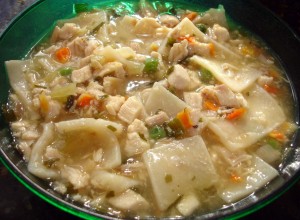
Dottie’s Chicken & Dumplings by Packit Gourmet. $6.49 per serving.
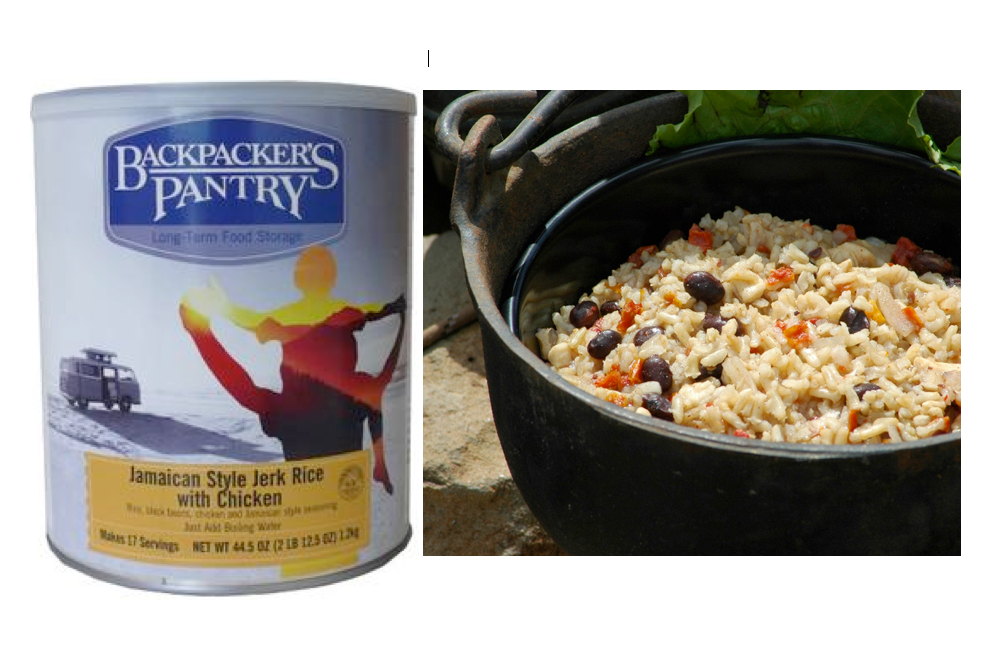
Backpacker’s Pantry Jamaican Jerk Rice with Chicken. $4.50 per serving.
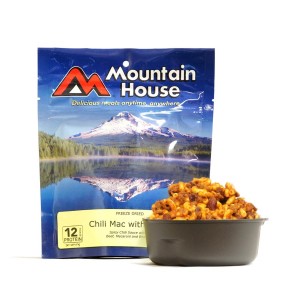
Mountain House Chili Mac. $3.75-$4 per serving.

Mountain House Beef Stroganoff. $3.75 per serving.
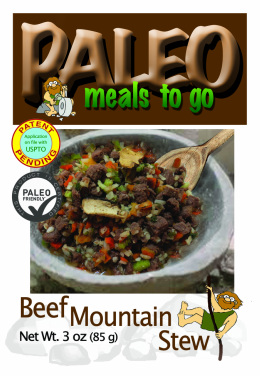
Paleo Meals To Go Beef Mountain Stew. $6.45 per serving after I’ve divided it up.
Links
How to Dehydrate your own Food
How to Make Yogurt on the Trail
Shop: Backpacker’s Shopping List


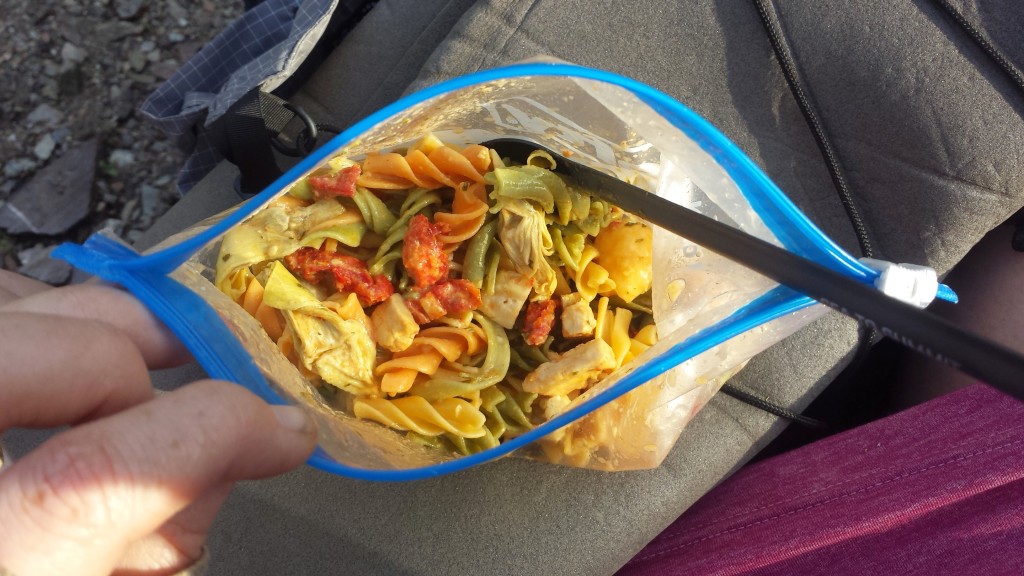

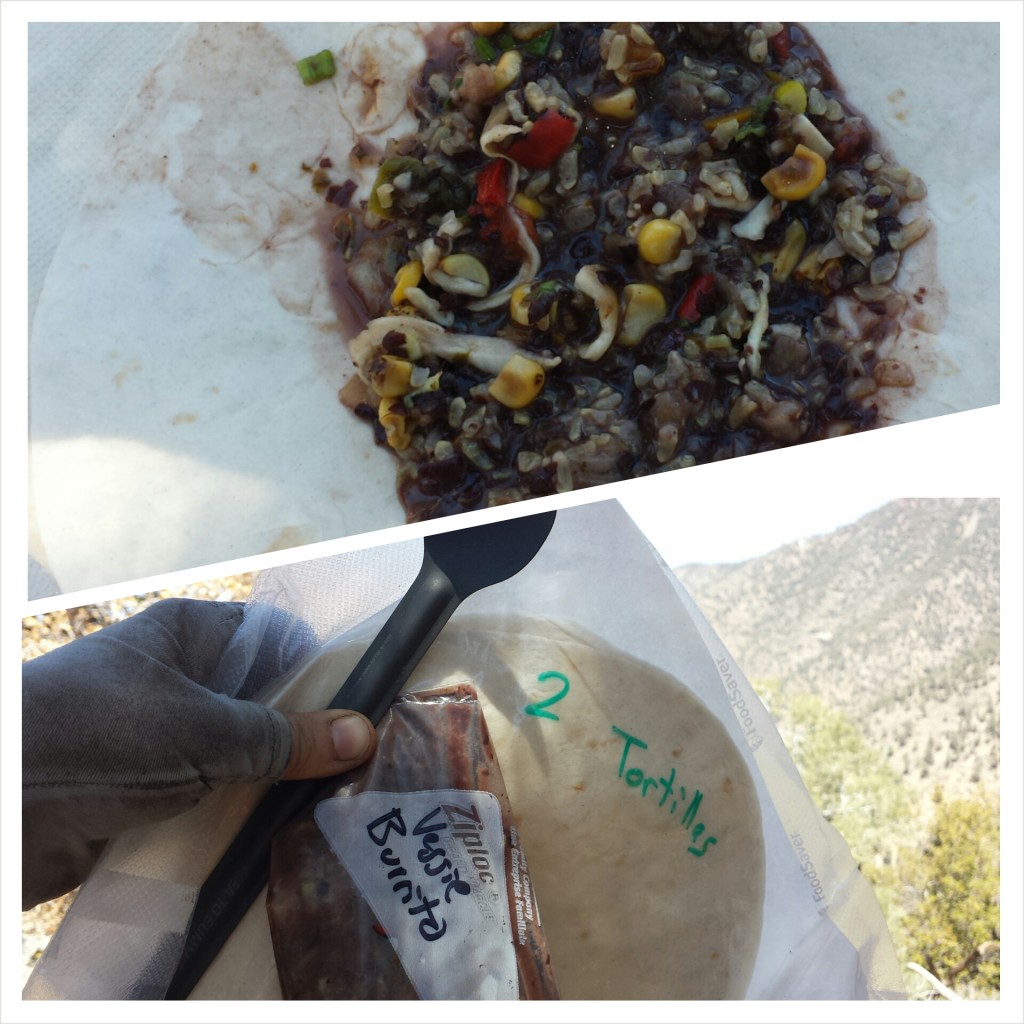
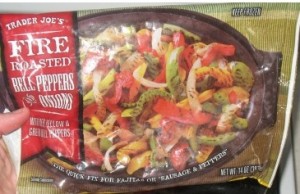
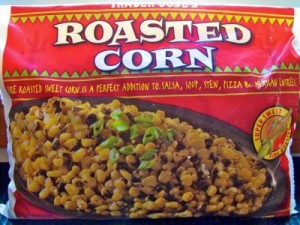
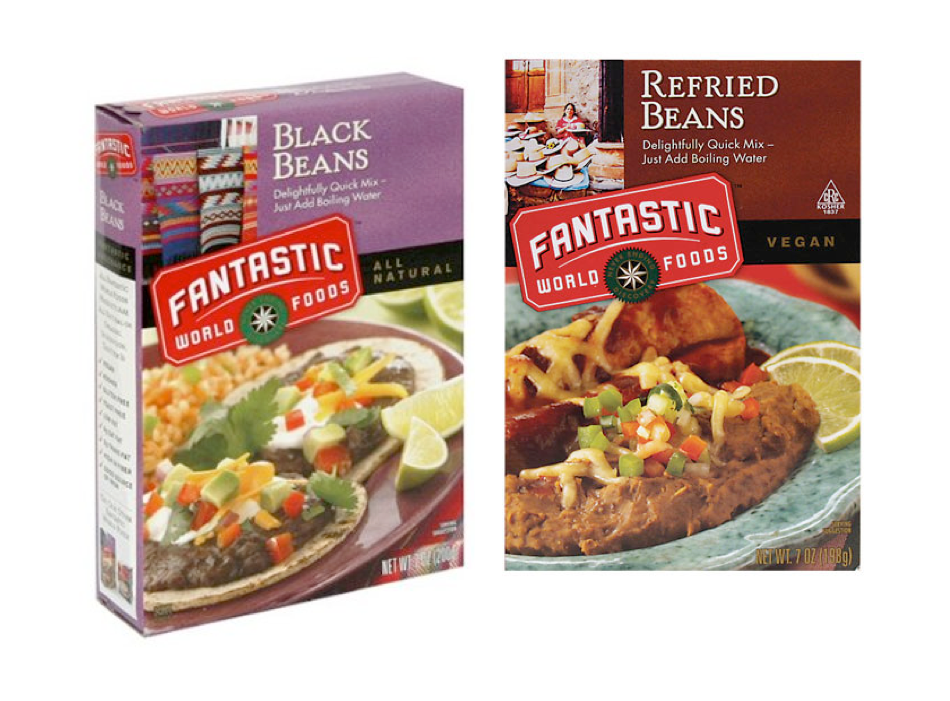
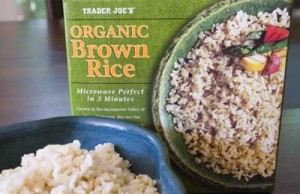

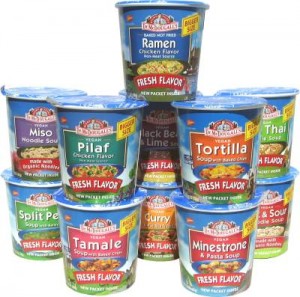

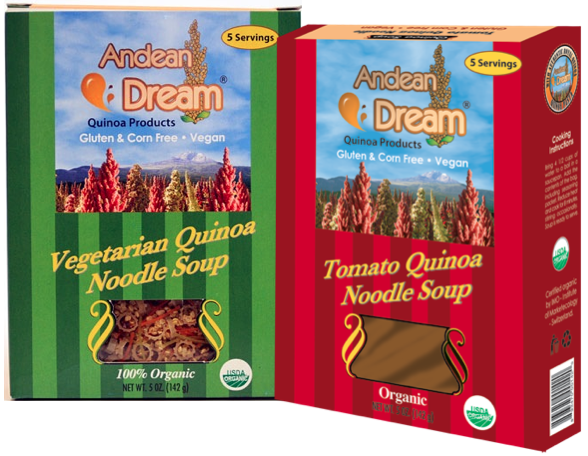
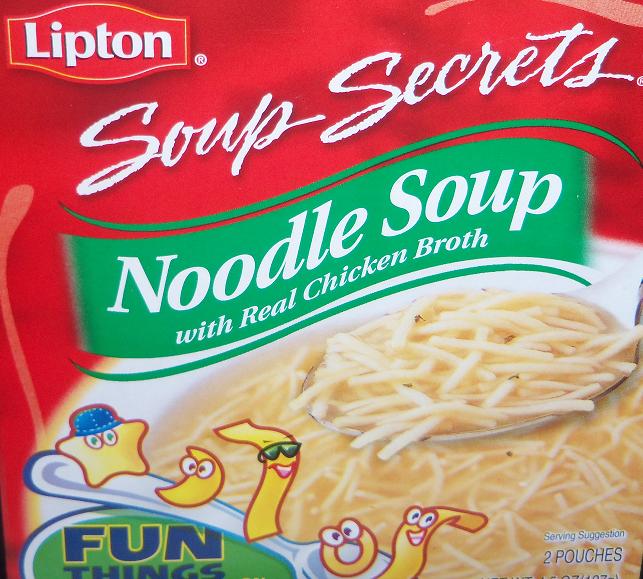

Pingback: Lower Sisquoc Loop – A Skirt In The Dirt